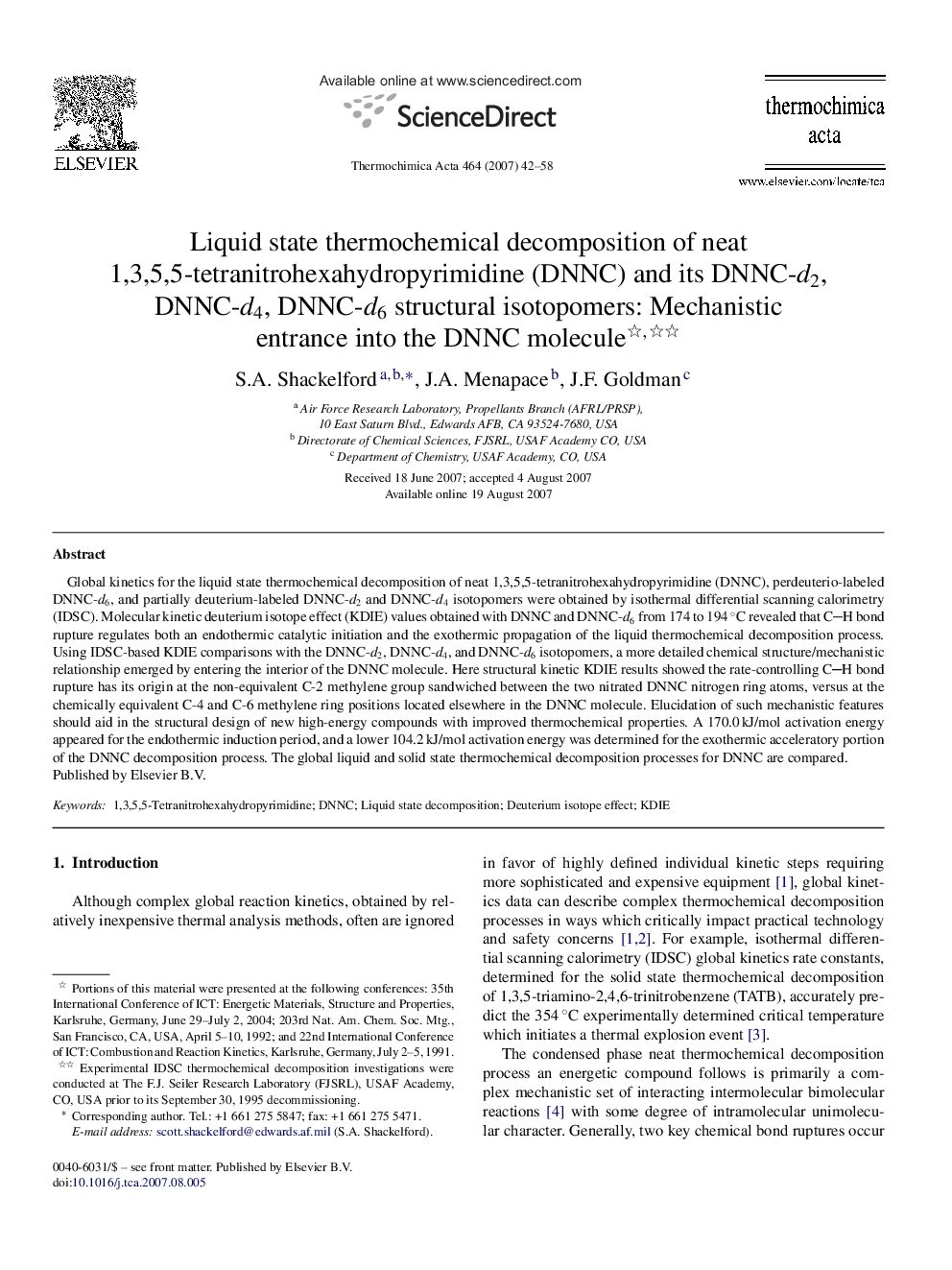| Article ID | Journal | Published Year | Pages | File Type |
|---|---|---|---|---|
| 675434 | Thermochimica Acta | 2007 | 17 Pages |
Abstract
Global kinetics for the liquid state thermochemical decomposition of neat 1,3,5,5-tetranitrohexahydropyrimidine (DNNC), perdeuterio-labeled DNNC-d6, and partially deuterium-labeled DNNC-d2 and DNNC-d4 isotopomers were obtained by isothermal differential scanning calorimetry (IDSC). Molecular kinetic deuterium isotope effect (KDIE) values obtained with DNNC and DNNC-d6 from 174 to 194 °C revealed that CH bond rupture regulates both an endothermic catalytic initiation and the exothermic propagation of the liquid thermochemical decomposition process. Using IDSC-based KDIE comparisons with the DNNC-d2, DNNC-d4, and DNNC-d6 isotopomers, a more detailed chemical structure/mechanistic relationship emerged by entering the interior of the DNNC molecule. Here structural kinetic KDIE results showed the rate-controlling CH bond rupture has its origin at the non-equivalent C-2 methylene group sandwiched between the two nitrated DNNC nitrogen ring atoms, versus at the chemically equivalent C-4 and C-6 methylene ring positions located elsewhere in the DNNC molecule. Elucidation of such mechanistic features should aid in the structural design of new high-energy compounds with improved thermochemical properties. A 170.0 kJ/mol activation energy appeared for the endothermic induction period, and a lower 104.2 kJ/mol activation energy was determined for the exothermic acceleratory portion of the DNNC decomposition process. The global liquid and solid state thermochemical decomposition processes for DNNC are compared.
Keywords
Related Topics
Physical Sciences and Engineering
Chemical Engineering
Fluid Flow and Transfer Processes
Authors
S.A. Shackelford, J.A. Menapace, J.F. Goldman,
